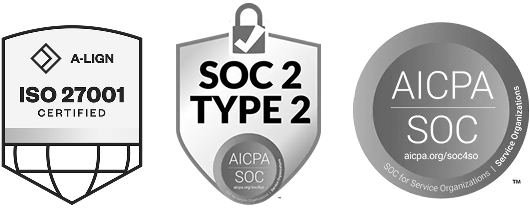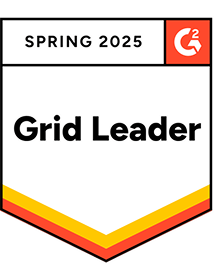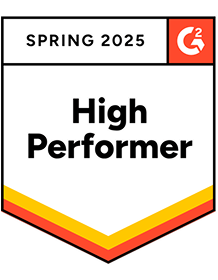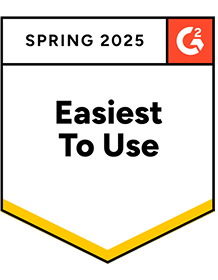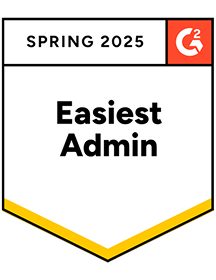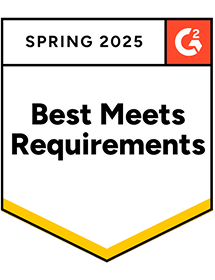A Master Class in Earned Wage Access
This decision-maker's guide delivers expert insights into Earned Wage Access (EWA) solutions. Learn how to evaluate core benefits and risks as you navigate your provider vetting journey.
Definition of Earned Wage Access
Earned Wage Access (EWA), also known as On-Demand Pay (ODP) or Instant Pay, is an employee benefit that allows workers to access a portion of their earnings before payday. This service bridges the gap between earning and receiving pay, giving employees immediate access to funds to cover daily expenses, plan for upcoming costs, or respond to financial needs as they arise.
EWA is not a loan and involves no interest or hidden fees, making it a safe and cost-effective alternative to predatory payday loans and high-interest financial products.
Benefits for Employees
It’s the new normal way to be paid.
Getting immediate access to wages is becoming the norm for how employees expect to be paid. Just as services like Netflix, Spotify, and Uber have transformed how we consume entertainment, music, and transportation by making them instantly available, EWA is doing the same for payroll.
Today’s workforce, especially Gen Z and millennials, increasingly expects their pay to reflect the “on-demand” world they’re used to. Younger professionals have grown up in a time where everything is accessible at the push of a button.
A 2021 Ceridian study found that 83% of workers aged 18 to 44 prefer to access their wages at the end of each workday rather than waiting for a biweekly paycheck.1 All Gig platforms such as Uber, Lyft, and DoorDash promote instant payment features to attract workers.2
This trend is part of a larger cultural shift. People no longer want to wait for things they feel they’ve already earned, and paychecks are no exception. By providing access to wages as they’re earned, EWA delivers exactly what employees are looking for: flexibility, control, and immediacy.
It can be a financial lifeline.
- 65% of Americans live paycheck to paycheck.3
- Nearly half of Americans have $500 or less in their savings accounts.4 31% say unexpected emergencies are the reason why.5
- 4 out of 10 Americans struggle to cover their daily expenses.6
With real-time access to wages as needed, employees can better manage unexpected expenses, avoid costly payday loans, and achieve greater financial stability.
- Immediate access to earned wages with 100% approval*
For employer-integrated EWA models, the service relies on payroll and timekeeping data rather than Know Your Customer (KYC) procedures—typically required by financial institutions to verify user identities. This means no cumbersome identity verifications or extensive documentation are required, making the benefit simple and accessible for employees. (*Note: Rain’s standard – check vendor’s specific approval rate)
- Reduction in financial stress
A recent Rain user survey revealed that 40% of people occasionally cannot cover their bills and basic needs, while the average mental burden of thinking about finances was rated at 4.8 out of 5. Earned Wage Access provides immediate relief, reducing stress and helping employees stay focused and productive without resorting to high-interest financial services.
- Decreased reliance on payday loans and other high-interest financial services
The amount of this finance charge can range from $10 to $30 for every $100 borrowed, while the average overdraft fee has climbed to$27.08 in 2024.8,9 The average EWA instant transaction fee is under $4 with generally a free option available.10
Benefits for Employers
Implementing Earned Wage Access provides significant benefits across various departments. EWA enhances employee satisfaction and retention and positively impacts operational efficiency and financial performance. EWA users work more hours, more often, and stay employed longer than their non-user colleagues.
Human Resources (HR)
- Enhanced employee satisfaction and engagement
Employees are 2.3x more likely to look for a new job if they are financially stressed.11
- Reduction in turnover rates
By comparing cohorts of Rain users vs non-users for all its employer-partners, the average Rain employer has realized a 50% improvement in retention of their employees who used Rain vs. the ones who did not.- Employers that offer Rain have realized an average 13% increase in retention.
- When employers offer desired benefits like EWA, 78% would recommend their employer, 68% are less likely to seek new roles, and 65% report higher engagement at work.12
- Competitive edge in talent acquisition
Rain’s employer partners actively market EWA in job postings, using it to attract top talent. Offering EWA not only attracts financially conscious candidates seeking immediate financial flexibility but also strengthens employer branding by positioning the company as a forward-thinking, employee-focused organization.
Operations
- Reduced absenteeism
Employees who experience financial stress are five times more likely to report being distracted at work, with 44% acknowledging that financial concerns interfere with their focus.7
On average, Rain users work 17 more hours per month vs. non-users. This increased availability translates into improved workforce reliability,
- Increased shift accuracy (Fewer missed clock-ins and clock-outs)
By reducing financial stress and enabling timely access to wages, Rain helps drive better shift accuracy. This enhances scheduling efficiency and minimizes payroll discrepancies, ensuring better alignment between actual hours worked and HR systems.
Finance
- Reduced overhead cost due to fewer hiring and onboarding needs
The average cost to hire and onboard an employee varies from $1,500 to $4,500. Employers spend less time and resources on frequent onboarding and training, allowing teams to focus on growth and productivity instead of continually replacing staff.
- Improved bottom line
A study assessed the aggregate annual loss experienced by employers due to employees’ financial stress at $250B.13
Smart Strategy: To benefit from an EWA program, your vendor must deliver a positive employee experience and achieve high adoption rates. Be sure to ask potential vendors about their standard adoption metrics before making a decision. At Rain, we maintain a standard adoption of 25%+ (monthly active users / total eligible employees).
1. GlobeNewswire article, “Ceridian Study: Vast Majority of Working Americans Want to be Paid On-Demand,” 2021.2. National Bureau of Economic Research, Devdiscourse article, “The Power of Instant Pay: How Real-Time Earnings Access Drives Increased Work Hours,” 2024.3. CNBC and SurveyMonkey’s 2023 Your Money International Financial Security Survey.4. GOBankingRates survey of 1,063 U.S. adults, November 2023.5. Payroll.org and Forbes Advisor survey, 2023.6. 2023 Census Data.7. PwC’s 2023 Employee Financial Wellness Survey. 8. Consumer Financial Protection Bureau (CFPB), Consumer Education, 2024.9.Bankrate’s 2024 Checking Account and ATM Fee Study.10. CFPB, Data Spotlight: Developments in the Paycheck Advance Market, 2024.11. www.useorigin.com, 2021.12. Bank of America, 2024 Workplace Benefits Report.13. Matthew Riccio, Thrive (Sponsored by Discover), Research on Employee Financial Stress, 2024
EWA is an extraordinary tool for employees to manage their finances. It can create a significant positive impact on their employers as a result. Launching an EWA program can, however, create risks for your organization. It is crucial for you to have a clear awareness of the risks and to select a vendor that can eliminate them.
Risks for Employees
Dependency: Employees may become overly reliant on EWA, which is why Rain emphasizes the importance of employer-established guardrails and additional financial wellness features to support long-term financial health. At Rain, we limit access to 50% of gross wages, ensuring employees still receive a paycheck on payday. Employers can also set transaction limits to encourage responsible use of EWA.
Hidden fees: Some vendors may be using fee harvesting practices with hidden fees or tips. At Rain, we believe in full pricing transparency, with fees always clearly exposed to employees before any usage.
Disturbed payday: Depending on the model type used by the EWA vendor, payday reliability might be impacted. Rain’s payroll adjustment model removes any such risk and does not take over payroll. (This is covered in more depth in the following part of this guide regarding EWA models).
Change in banking habits: Some EWA vendors mandate changes of direct deposit accounts or the use of their own debit cards to access earned wages. At Rain, we chose to be bank agnostic. Employees can access their wages without any disruption to their existing banking life. Oversharing of data: Some EWA models require a significant amount of Personally Identifiable Information (PII) data to operate. At Rain, we operate a data minimalistic model requiring the least amount of all U.S. providers, placing a strong emphasis on protecting employee privacy.
Risks for Employers
Payroll burden: Depending on the model chosen, EWA can place additional responsibilities on payroll teams, particularly with a payroll deduction model, which requires processing deductions during each pay cycle. To minimize this burden, it’s important to select a provider with seamless, automated integrations with your payroll system. Rain fits into this category, having optimized this process across all major U.S. payroll solutions. Our payroll adjustments are delivered with 100% accuracy and 100% timeliness, earning us an employer NPS (Net Promoter Score) of 71 in 2024, a testament to the effectiveness of our automated deductions.
Burden on HR teams: Confusion among employees, such as unclear paystub transparency or clunky onboarding processes, and frustration, such as late pay on payday, can lead to increased HR support requests. Employees typically turn to their HR teams—not the EWA vendor—when they don’t understand their pay. At Rain, we address this by providing employees with a seamless and straightforward experience. Our employee NPS score reached 73 in 2024, reflecting the satisfaction of our users. As a result, Rain’s employer partners report fewer than 1 HR support request per 1,000 employees per month related to the Rain EWA program.
Reputational risk: An EWA program that causes late pay or harms employee financial wellness through predatory fees can damage your organization’s reputation. Discontented employees may share their frustrations publicly, hurting your employer brand and deterring talent. Choose a provider that aligns with your values, prioritizes transparency, and delivers a reliable, responsible program.
Security risk: EWA programs may require significant data fields. Select a vendor that does not require extensive data fields and has very strong data security practices in place (e.g., SOC2 compliance).
Regulatory risk: Earned Wage Access is a relatively new and rapidly evolving financial service, with regulatory frameworks still being developed at both state and federal levels. Selecting a vendor with deep expertise in EWA regulations and a proactive approach to compliance is essential. A knowledgeable vendor will stay ahead of regulatory changes and provide guidance to help keep your program compliant, reducing legal risks and safeguarding your organization.
There are multiple EWA models in the market, each with its own processes and nuances. Most models can be understood by asking three simple questions:
- How are wages calculated?
- How are advanced wages distributed?
- How are advanced wages reconciled and recouped?
To maximize the benefits of your EWA program and mitigate risks, it is essential to understand these perspectives and accurately determine the categories into which the vendors you are evaluating fit.
1. How are wages calculated?
Wages can be calculated via an integration with the employers’ HRIS and Timekeeping / Time & Attendance solutions, or a credit limit can be given via a risk score.
Through an “Employer-Integrated” model, vendors get census employee information (via an HRIS integration) and hours worked by employees (via a Timekeeping integration).
Such a model typically allows for a) accurate wage balances b) easy and high-approval employee onboarding (as employees are already pre-approved in the EWA vendor’s system). Such a model requires a more complex implementation of the vendor.Through a “Direct-to-Consumer” model (DTC), vendors do not rely on accessing employer’s systems to estimate earned wages. Employees are instead given credit limits based on a risk score, restricting employees to smaller amounts. Such a model typically creates inaccurate wage balances but does not require any implementation of the vendor.
2. How are advanced wages distributed?
Advanced wages can be distributed either directly to employees’ existing bank accounts (i.e., the solution is bank agnostic) or on a card / account mandated by the EWA vendor (i.e., the solution is typically referred to as a “Card model”).
Bank agnostic EWA vendors allow for less disruption of employees’ banking lives, while card models’ EWA vendors force employees to use a new account.
Card models typically allow employees to then transfer amounts to their own bank account, but for an additional fee, making those solutions not truly free (i.e., EWA wages will be distributed for free only to the vendor controlled card or account).
3. How are advanced wages reconciled and recouped?
Once wages have been calculated and distributed, vendors have three main ways to recoup funds on payday:
a. Perform a payroll deduction through the payroll module (i.e., Payroll Deduction or Payroll Adjustment model) and invoice employers for the sum of advanced wages
b. Change employees’ Direct Deposit accounts
- Either establish FBO (For the Benefit Of accounts) to route part of the funds before depositing the remainder to employees’ own bank accounts (i.e., Payroll Intercept model)
- Pull directly from employees’ Bank accounts
Based on the 3 key perspectives to evaluate an EWA vendor 1) wages calculation, 2) wages access, and 3) advanced wages repayment, a few key models stand out in the marketplace:

Important: A provider might fall into multiple “buckets,” for instance, Rapid and Branch are card models (i.e., employees must access advanced wages through the Rapid or Branch cards) but operate with a Payroll deduction on payday. Instant is a card model with either a Payroll Deduction or Account pull for repayment.
Direct-to-Consumer Model
How it Works
DTC models operate independently of employer payroll or timekeeping systems. Employees take cash advances against their upcoming paychecks or deposits, typically incurring high fees or subscription costs. These advances rely on credit checks and risk assessments to determine eligibility and borrowing limits.
Employee Experience:
- Employees must sign up to a vendor controlled account - without 100% approval.
- Employees are given credit limits based on a risk score, restricting employees to smaller amounts (e.g., $100-$200 per pay period) rather than allowing access to earned wages proportionate to their hours worked (e.g., 50% of gross earned wages or 100% of net for employer-integrated models).
- Employees often must change their direct deposit account to be on the vendor's account. On payday, the vendor will directly pull the funds from the account.
- In cases of non-repayment, the service operates on a recourse model, meaning the provider can pursue employees directly to recover funds.
- The lack of oversight means there are no protections in place to monitor responsible usage.
Data Requirements
DTC providers require extensive personal and financial data from employees to assess lending risk and manage repayment. There are no security risks for employers as no data is required from them.
Employer Experience
- DTC models require no employer involvement or integration, removing any implementation requirements. There is also no program to manage.
- Frustration resulting from inaccuracies and low amounts in estimated earned wages—common in DTC models—can negatively impact employee satisfaction and ultimately trickle back up to employers (e.g., HR support requests).
- Lower adoption and limited employee experience also mean no to little impact on retention, attendance, and hiring, which employers see with employer-integrated models.
Compliance Implications
Regulatory scrutiny and concerns primarily focus on Direct-to-Consumer advance models, which often resemble payday loans more than financial wellness tools with limited transparency regarding fees and lending terms. In its final rule to regulate EWA in October 2024, the California Department of Financial Protection and Innovation (DFPI) classifies DTC EWA products as loans under the California Financing Law (CFL). This framework puts DTC EWA in the same category as traditional lending products, such as small dollar loans, while employer-integrated EWA (like Rain) is categorized differently, aligning more closely with employee-focused financial wellness solutions.
Payroll Deduction or Payroll Adjustment Model
How it Works
- The vendor integrates with employers' HRIS and Time & Attendance systems to calculate earned wages.
- Employees access their earned wages on-demand through an app. Users can see their current balance based on hours worked in the current pay period and initiate a transaction to transfer funds to a bank account or card.
- Following the conclusion of each pay cycle, the vendor delivers EWA adjustments that are imported into the payroll module via API or a flat file import. Adjustments are systematically confirmed before running payroll, a key element to prevent errors. Payroll is run as usual, paying out employees' earned wages, withholding taxes, and deductions, including the EWA transactions.
- The employer pays the vendor the aggregate amount of users’ EWA transactions.
Note: Vendors typically provide the funding for advanced wages. This is considered a table stake in the EWA industry for employer-integrated models. When evaluating vendors, review their debt facilities to determine whether they can reliably support your program’s funding requirements.
This model is utilized by Rain, Netspend EWA, PayActiv, UKG Wallet, ONE@Work (formerly Even), and Tapcheck (not exhaustive).
Employee Experience
- Service discovery and account creation: Employees learn about the voluntary EWA benefit through marketing and communication efforts. They can sign up by downloading an app, creating an account, and selecting their employer. The available balance (typically up to 50% of gross wages for such models) is updated in near real-time depending on the vendor’s technical integration with the employer’s timekeeping solution.
- Accessing earned wages: Employees link a debit card or bank account to the app for fund transfers. Some vendors may mandate the use of a certain card. Funds can typically be transferred to a bank account for free with next business day delivery via ACH or instantly to a debit card for a fee.
- Pay stub transparency: Employees easily comprehend and reconcile advanced wages with a single line deduction item on the pay stub. Bank deposits also always match the one showing on the pay stub.
- Receiving pay: Payday reliability is never compromised as employees continue to get paid by their employers without risk of payroll disruption. Employees can continue receiving their pay to multiple accounts on payday.
Employer Experience
This model allows employers to maintain total control and flexibility over payroll with minimal operational involvement, only requiring the payroll team to facilitate a one-time deduction at each pay cycle. The burden of this process highly depends on the vendor’s ability to automate and integrate efficiently with the payroll system.
- Control over payroll: Employers retain control over payroll processes, maintaining reliability and eliminating reputational risks. While payroll deductions are required, the vendor can streamline and automate this process, minimizing the workload for payroll teams.
- Transparency and minimal support needs: Clear and easily reconciled advanced wages significantly reduce the need for user support. Unlike the Intercept model, this approach enables employees to easily understand their pay, minimizing confusion and reducing calls to HR about discrepancies between their pay and pay stubs. This clarity is a key advantage of this model.
- Limited onboarding and administration: Administrative efforts are limited to payroll deduction ingestion, with minimal onboarding efforts required. Employees can use their existing bank accounts immediately without the need to change direct deposit accounts.
- Minimal data requirements: Although varying by vendors, Payroll Adjustment vendors typically require less data than other models (e.g., Rain requires basic employment information, employee ID, name, wage rate, email, or phone number). Privacy is preserved with limited personally identifiable information (PII) data needs, also streamlining implementation.
Compliance Implications
Standard "wage assignment" or "deductions" may be subject to various state regulations. However, the payment of earned wages does not qualify as a "withholding" or "deduction," as no earned wages are withheld from the employee to pay for goods or services. Additionally, maintaining pay stub integrity is essential, as it provides employees with a clear record of their earnings and deductions, minimizing confusion.
Payroll Intercept Model
How it Works
The vendor establishes shadow For Benefit Of (FBO) accounts for all participating employees. The employer must update employees’ deposit accounts to match these FBO accounts. The vendor often automates that process with daily Direct Deposit Account updates in the payroll module via file import or API.
The process follows these steps:
- The vendor integrates with employers' HRIS and Time & Attendance systems to calculate earned wages.
- Employees access their earned wages on-demand through an app. Users can see their current balance based on hours worked in the current pay period and initiate a transaction to transfer funds to a bank account or card. Users get their direct deposit account changed to vendor controlled FBO accounts.
- The employer processes payroll as usual.
- The vendor intercepts employees' paychecks through the FBO accounts.
- The vendor recoups their funds plus a fee.
- The vendor sends the remaining balance to employees' personal bank accounts.
It is important to note that steps 4 and 6 often occur simultaneously. The vendor does not wait to receive funds before sending payments to employees. Instead, both the employer and vendor are processing payroll concurrently. This can lead to potential issues, especially during holidays or non-standard pay periods. For example, if the vendor doesn't adjust their payout schedule for a holiday weekend, it could delay when employees receive their funds.
Participating employees receive their wages from the EWA provider, and their pay stubs will match the provider's controlled account, not the employees' bank accounts. In this model, the employer effectively entrusts payroll timing and processing to the vendor. This shift in control means employers should be aware of and prepared for potential variations in payroll processing schedules and accuracy.
Employee Experience
- Service discovery and account creation: Similar to the Payroll Adjustment model. The available balance can be higher than 50% of gross wages for this model due to lesser repayment risks for the vendor.
- Accessing earned wages: Similar to a Payroll Adjustment model.
- Pay stub transparency: In an Intercept model, pay stubs do not show EWA transactions. Employees may notice discrepancies between their pay statements and the actual amount deposited into their bank accounts, leading to confusion. The deposit account showing on the pay stub will also not match a recognized bank account.
- Receiving pay: Employees effectively get paid by the EWA vendor. Due to the simultaneous and additional intercept step, employees might receive their paychecks late. Employees can no longer receive their pay on multiple accounts.
Employer Experience
While processing may appear more hands-off, the Intercept model can create several challenges for employers:
- Dependency on vendor. Employers must rely on the vendor to accurately intercept and distribute payroll, leading to potential risks of delays and inaccuracies. There is no payroll deduction to process, which is the main advantage of this model.
- Increased support requests: The confusion caused by mismatched banking deposits and pay stubs often results in a heavy operational burden on employers' HR and payroll teams, who must manage a significant influx of employee support requests.
- Added operational burden: For this model to work, the self-service feature to update direct deposit accounts in the HCM platform must be turned off, and the HR team must manage it with employees.
- Security risks: This model requires additional PII data to establish FBO accounts for each employee, increasing the complexity of data management and security protocols.
Compliance Implications
Money transmitter licensing requirements: The Intercept model often requires a money transmitter license in multiple states because the provider takes possession of employee wages before redistributing them. Without proper licensing, employers risk partnering with providers that are non-compliant, exposing the organization to regulatory penalties.
FBO (For Benefit Of) accounts: The reliance on FBO accounts in the Intercept model introduces complexities. These accounts route wages through the provider’s systems, potentially delaying wage access for employees and risking non-compliance with state wage-payment laws that mandate wages be immediately available on payday.
Payroll transparency and audit risks: Employers relying on providers using the Intercept model face challenges ensuring paystub transparency. Wages intercepted by third-party accounts may not align with legal requirements for accurate wage statements. This discrepancy could lead to complications during audits, as employers must depend on vendors to validate and reconcile wage payments.
Regulatory exposure: By diverting wages through shadow accounts, providers using the Intercept model may blur the line between earned wages and regulated financial products. Misalignment with CFPB guidelines could trigger regulatory scrutiny and lead to classification of payments as credit products.
Card Model
This employer-integrated model is less common than the previous two models as it tends to be much more disruptive to employees' banking lives.
How it Works
Essentially, this model requires employees to start banking with the vendor to access their earned wages.
- The vendor integrates with employers' HRIS and Time & Attendance systems to calculate earned wages.
- Employees access their earned wages on-demand through an app. Users can see their current balance based on hours worked in the current pay period and initiate a transaction to transfer funds to a bank account or card.
- Repayment for most card models is done via a deduction (common), an intercept (less common), or an account pull (rare - might be the case if the EWA provider is also a paycard provider and the net pay is distributed on the card) process.
This model is, for instance, utilized by Rapid, Instant, and Branch.
Employee Experience
Employees must change their banking habits as they are mandated to use a vendor controlled account to access their earned wages. The mandate of a card creates additional steps during the onboarding process by typically requiring more data and needing to send a card to users. If employees want to transfer the funds to their existing bank account, they must often pay a fee, as the “free” option only generally applies if the funds remain in the vendor controlled account.
Employer Experience
This model can create several challenges for employers:
Increased support requests: Due to the onboarding friction, employees require additional support to go through onboarding.
Sub-par adoption: Due to mandated account creation and onboarding challenges, these models typically see lower adoption (<5%). This low adoption rate undermines the value of EWA for employers, as achieving at least 20% adoption is necessary to meaningfully impact employee turnover and productivity metrics.
Additional Nuances in EWA Models
White-label Model
How It Works: EWA is offered under a certain brand (e.g., UKG Wallet) but is powered by a third-party vendor (e.g., Payactiv). It can be an Intercept, Deduction, or Card model, depending on the underlying vendor.
Employee Experience: The quality of the employee experience depends on the underlying provider. The brand will, however, fine-tune the product offering to cross-sell its existing product. For instance, multiple paycard providers offer white-label EWA with free transactions to their cards – to foster card usage, potentially at the expense of the employee experience. Typically, employees are often required to download a separate EWA stand-alone app, as it's not integrated into their main app.
Employer Experience: Roles and responsibilities are shared between the brand and the vendor, which can lead to a less optimized service. Support will often be funneled through the third-party, leading to potential delays in resolving issues. The product may also see fewer/later updates due to the multiple parties involved.
Smart Strategy: Third-party EWA vendors should be vetted as thoroughly as the brand's main organization.
The following vendors are white-label solutions: UKG wallet (Payactiv), Netspend (Rain), MyFlexPay by OneSourceVirtual (Wagestream), ADP Wisely (DailyPay), Fiserv Money Network Earned Wage (Instant).
Native HCM Model
How It Works: EWA is offered natively (and not through a white-labeled third-party) by the HCM provider. The employer must typically use the HCM vendor for both payroll and timekeeping. It often operates on a payroll deduction model.
Employee Experience: Depending on the HCM provider, the quality of the EWA service may vary greatly due to the lack of product focus from the HCM vendor. For instance, most do not offer instant transfers, which is a must-have feature for most EWA users (80%+ of EWA transactions are instant).
Employer Experience: There is no additional vendor to onboard and manage. The onboarding is typically easy as it is a native feature. Raising awareness to employees will however have to be managed by the employers. Point solution EWA providers often have specific playbooks and budgets to raise benefit awareness directly to employees. In case of a change in systems (e.g., switching timekeeping to another vendor), the HCM provider will no longer be able to service EWA to the employer. Service quality varies depending on the vendor. More importantly, advanced wages often need to be funded by the employer, seriously impacting cash flow and creating a cost.
The following HCM providers offer EWA natively (not white-labeled): Paylocity, Ceridian.
Selecting the right Earned Wage Access provider is a crucial decision that can significantly impact your organization and your employees. It’s important to follow a structured plan and ask the right questions so you make the best choice. This outline will help you navigate the process of vetting EWA vendors, from assessing your needs to preparing for the implementation.
Step 1
Assess needs and objectives.
Determine what your organization wants to achieve with EWA. Consider the specific benefits you aim to provide to your employees and how EWA fits into your overall financial wellness strategy. We recommend you evaluate if your competitors already offer EWA or survey your employees to assess demand.
Step 2
Assess needs and objectives.
Determine what your organization wants to achieve with EWA. Consider the specific benefits you aim to provide to your employees and how EWA fits into your overall financial wellness strategy. We recommend you evaluate if your competitors already offer EWA or survey your employees to assess demand.
Step 3
Understand EWA models.
Research different EWA models (Payroll Deduction, Payroll Intercept, Direct-to-Consumer, etc.) and identify which model aligns best with your organization’s objectives and comfort level.
Step 4
Research and shortlist vendors.
Identify key EWA providers that align with your preferred models and your company’s size. For example, Rain and DailyPay are prominent in the enterprise market, Tapcheck focuses on mid-market organizations, and ZayZoon specializes in serving SMBs. Look for vendors with integration or implementation experience with your Payroll and Timekeeping providers. Give preference to vendors with a strong reputation and a proven track record in the industry.
Step 5
Evaluate vendor capabilities.
Understand in which category vendors fall into by asking these 3 simple questions:
- How are wages calculated?
- How are advanced wages distributed?
- How are advanced wages reconciled and recouped?
Using a scorecard, evaluate vendors based on:
- Integration and Data Requirements
Experience with your Time & Attendance, HRIS, payroll systems, and data requirements.
- Employee Experience
Ease of account setup, transparency, minimal disruption to pay routines, banking habits, and customer support quality.
- Employer Experience
Ease of implementation, onboarding support, program maintenance, service quality, and reporting tools.
- Cost and Fees
Implementation and service fees, transaction and subscription fees, and free options.
- Compliance and Security
Regulatory compliance, data security, and privacy policies.
For a comprehensive list of questions and a detailed vendor scorecard, we invite you to download our Buyer’s Toolkit.
Step 6
Check references and case studies.
Speak with current clients about their experiences and review case studies to understand how the vendor has successfully implemented EWA for other organizations.
Step 7
Finalize vendor and plan implementation.
Review a complete set of questions so you can make the best decision for your organization. Evaluate vendors based on criteria that best serve your organization, such as integration capabilities, user experience, compliance with regulations, and support services. By thoroughly vetting potential providers and planning for alignment with payroll processes, you can plan a smooth and successful EWA implementation that benefits your organization and your employees.
Collaboration and Communication
Establish clear lines of communication between your team and the EWA provider for a smooth and efficient implementation process.
Training and Support
Make sure the provider offers comprehensive training for your team and ongoing support to address any issues that may arise.
Testing and Validation
Conduct thorough testing and validation of the system to make sure it functions correctly and meets your organization’s requirements.
Monitoring and Reporting
Utilize the provider’s monitoring and reporting tools to track user engagement and program effectiveness.
Customize reports to fit your organization’s specific needs.
Selecting and finalizing the right Earned Wage Access provider involves confirming seamless data integration with your HR, Timekeeping, and Payroll systems. Plan to align payroll processes and develop a comprehensive communication strategy for employee adoption. By addressing these key areas, you can ensure a smooth and successful EWA implementation that benefits your organization and your employees.
Conclusion
Selecting the right Earned Wage Access provider is vital for employers aiming to enhance their employees' financial wellness. An informed selection process is key to finding a provider that aligns with your needs while offering access to earned wages. Prioritizing employer experience, regulatory compliance, seamless HR/payroll integration, strong data privacy, and a user-friendly mobile app with live support is essential. Evaluating these factors thoroughly enables successful implementation and adoption of On-Demand pay, benefiting both companies and employees.
Rain experts are always ready to help guide you toward the best solution for your company. We look forward to partnering with you to enhance your employees' financial wellbeing.
The Evolution of Earned Wage Access


2010s
Earned Wage Access services gained popularity, with more providers entering the market, offering different models and fee structures.
2020
The COVID-19 pandemic accelerated the adoption of Earned Wage Access as many employees faced financial hardships.

EARLY 2000s
The Earned Wage Access concept emerged to help employees avoid predatory payday loans and improve financial wellbeing.
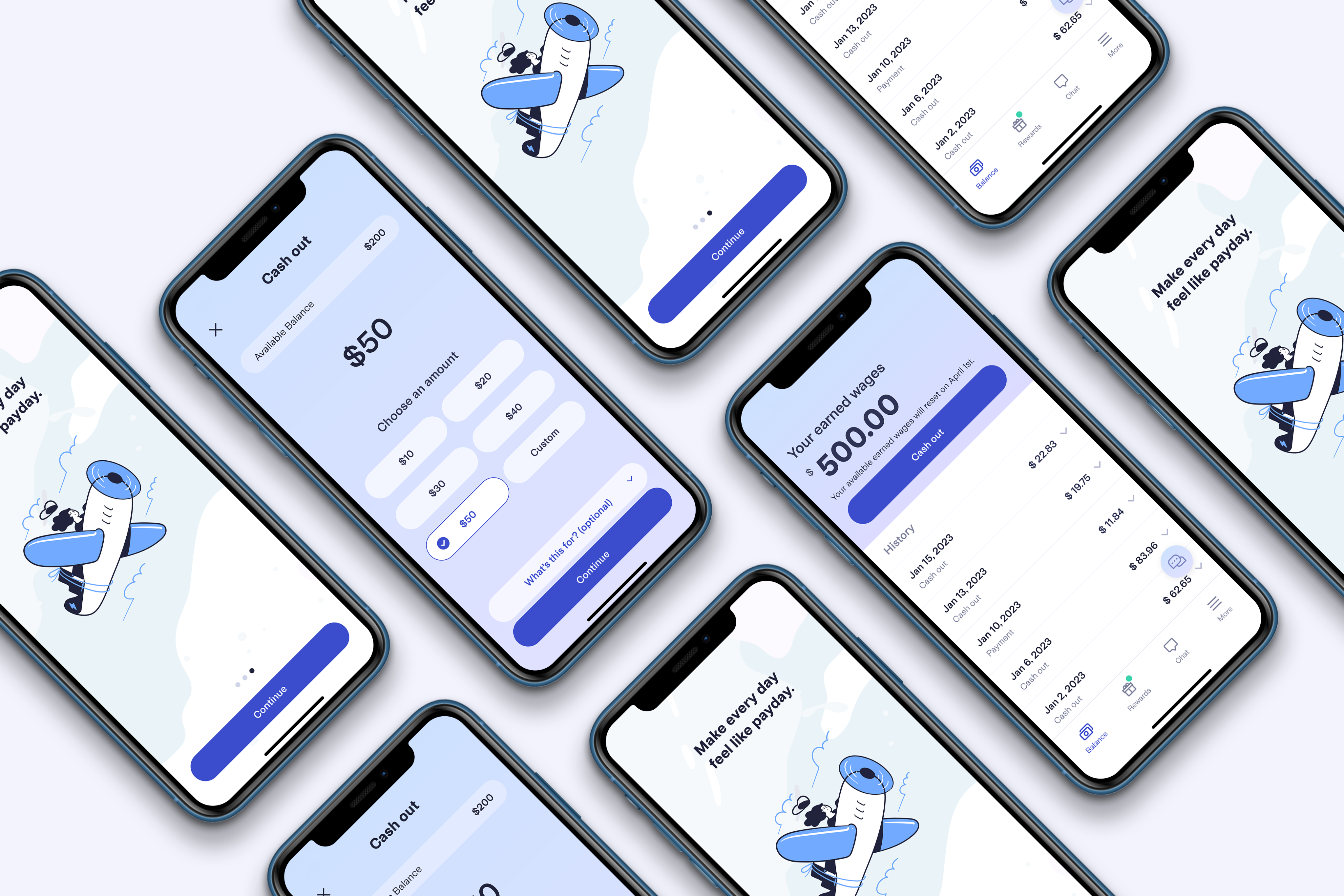
2019
Rain launched its Instant Pay app with a vision to be the easiest-to-implement provider of EWA services, focusing on social impact, financial stability, and simplicity. This vision resonated with top brands in the U.S., leading to widespread adoption.
TODAY
Earned Wage Access has become a mainstream financial benefit, with many employers offering it to attract and retain employees.
EARLY 2000s
The Earned Wage Access concept emerged to help employees avoid predatory payday loans and improve financial wellbeing.


2010s
Earned Wage Access services gained popularity, with more providers entering the market, offering different models and fee structures.

2019
Rain launched its Instant Pay app with a vision to be the easiest-to-implement provider of EWA services, focusing on social impact, financial stability, and simplicity. This vision resonated with top brands in the U.S., leading to widespread adoption.
2020
The COVID-19 pandemic accelerated the adoption of Earned Wage Access as many employees faced financial hardships.

TODAY
Earned Wage Access has become a mainstream financial benefit, with many employers offering it to attract and retain employees.
Partner with the right provider.
Work with us
© 2025 Rain Technologies Inc.
Rain is a financial technology company, not a bank. Rain deposit accounts are provided by Evolve Bank & Trust, Member FDIC.

